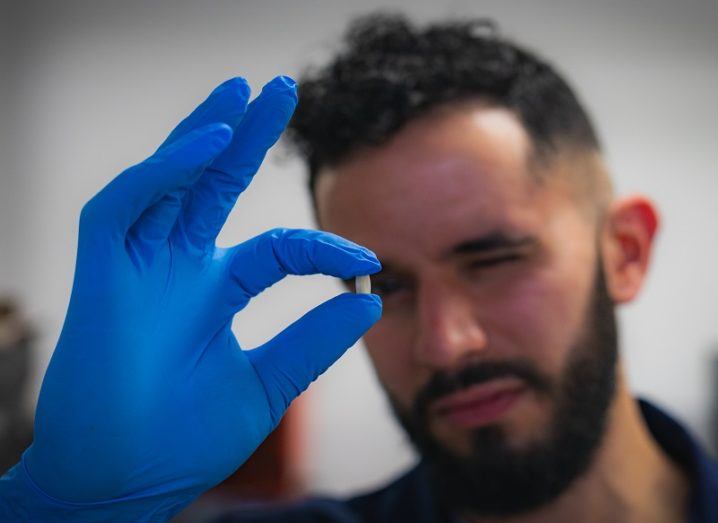Researchers from Athlone Institute of Technology (AIT), Ireland, are working to make taking multiple medications, otherwise known as polypharmacy, easier with a personalized 3D printed pill.
Evert Fuenmayor, Doctoral candidate at the Materials Research Institute, AIT, and Principal Investigator, Dr. Ian Major, have used FFF 3D printing and micro injection molding to develop custom bilayer tablets capable of releasing drugs in specific quantities.
According to the study published in the International Journal of Pharmaceuticals, additive manufacturing aids the exploration of medications custom to a person’s genetic makeup, that is, pharmacogenomics. This ultimately leads to the ideal patient treatments. Fuenmayor explains “Pharmacists will be able to make up the drug profile based on a patient’s unique needs there and then,”
“With the right drug-loaded polymers in stock and a small 3D printer, they’d be able to print your tablets in the actual pharmacy itself.”

3D printed pharmaceuticals
3D printing pharmaceuticals has enabled the creation of tablets containing specific dosages of a drug in various shapes and sizes. This not only increases the ease of oral consumption, but reduces the quantity of medication needed for a patient.
With three years of experimentation, Feunmayor and Dr. Major applied biocompatible, biodegradable polymers to create a personalised drug delivery system. Coupled with different 3D printing parameters the drugs can be released at an allotted time. “When we started this research, the idea that 3D printing with polymer could be used to deliver drugs to the body was really novel – no one was doing it,” added Feunmayor.
The researchers created 3D printed inserts loaded with hydrochlorothiazide, a medication used to treat high blood pressure and swelling. Using micro injection molding, another layer was produced and loaded with lovastatin, a medication to treat cardiovascular diseases. “We blended and melted the material, made filament with it and fed it into the printer,” Feunmayor explains.
“Depending on which settings we selected, we’re able to get entirely different drug profiles. With as little as two clicks, I could make it so that the tablet could last three days in the body or six hours – it just depended on the needs of the patient.”
Defining dosages
Presently, the researchers are trying to speed up the process of manufacturing the tablets as their method takes four hours to print 30 pills. To compare, using traditional methods, thousands of pills can be made in an hour. Fuenmayor concluded:
“We’re still learning about how different people react to different drugs and dosages and therapy approaches, so while we’re not there just yet in terms of making this a reality, this is where medicine dispensing is going and what we’re hoping for.”
“Mass-customization of oral tablets via the combination of 3D printing and injection molding” is co-authored Evert Fuenmayor, Crevan O’Donnell, Noel Gately, Patrick Doran, Declan M.Devine, John G.Lyons, Christopher McConville, and Ian Major.

For more 3D printing updates, subscribe to our newsletter, follow us on Twitter and like us on Facebook. Visit 3D Printing Jobs for new opportunities in your area.
Featured image shows Evert Feunmayor with the 3D printed pill. Photo via Athlone Institute of Technology.


